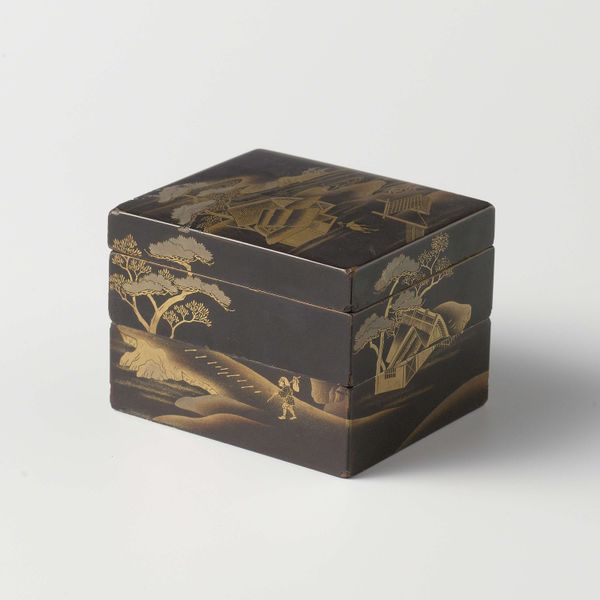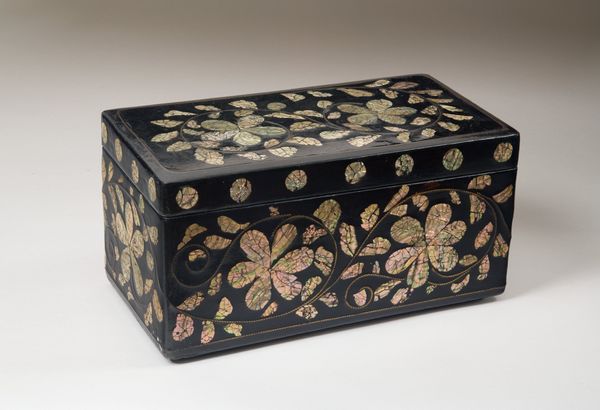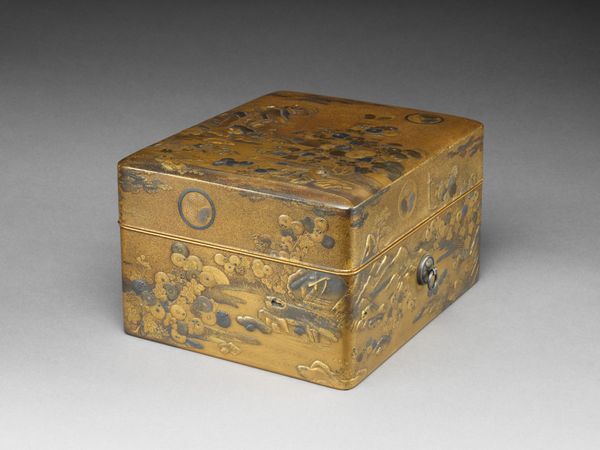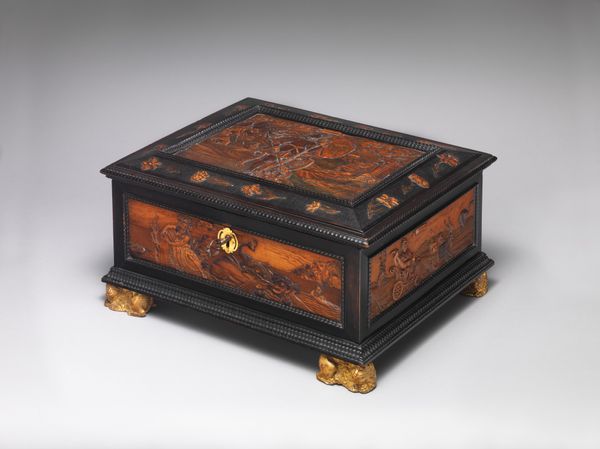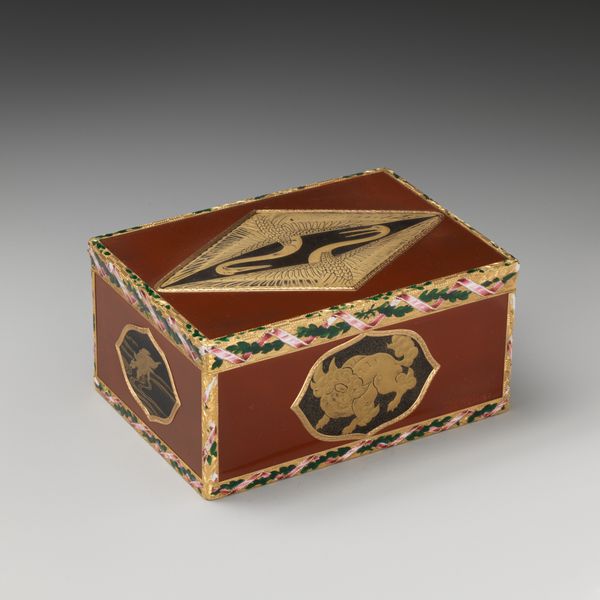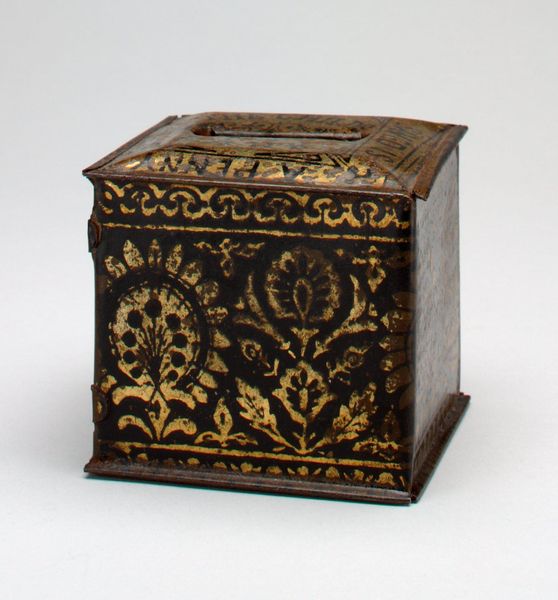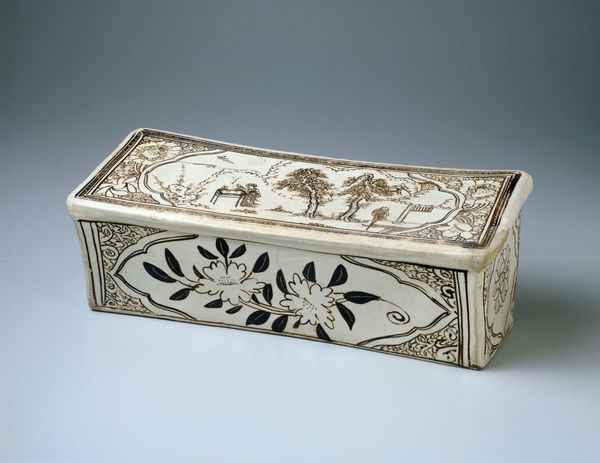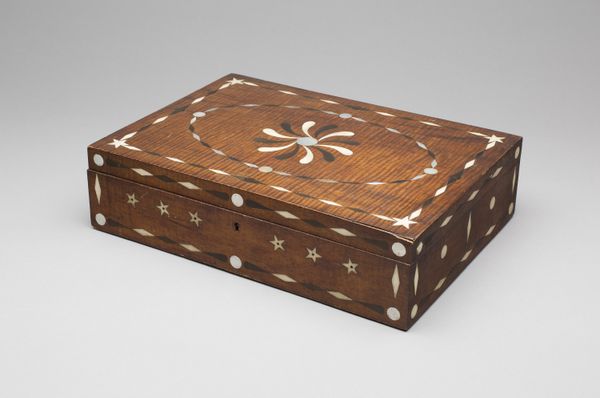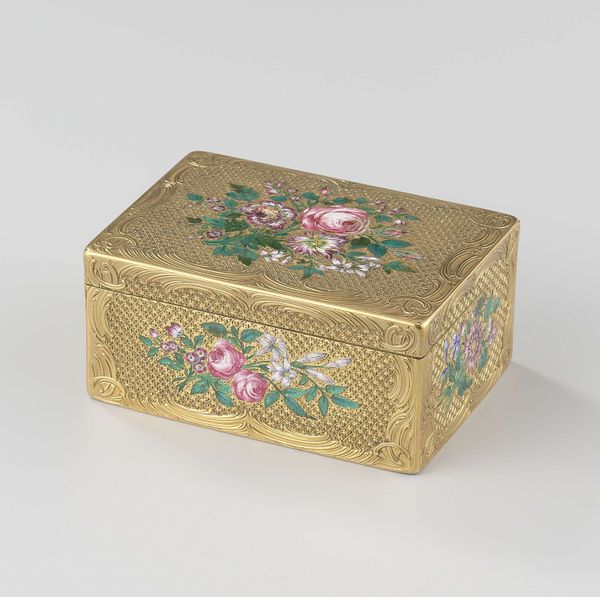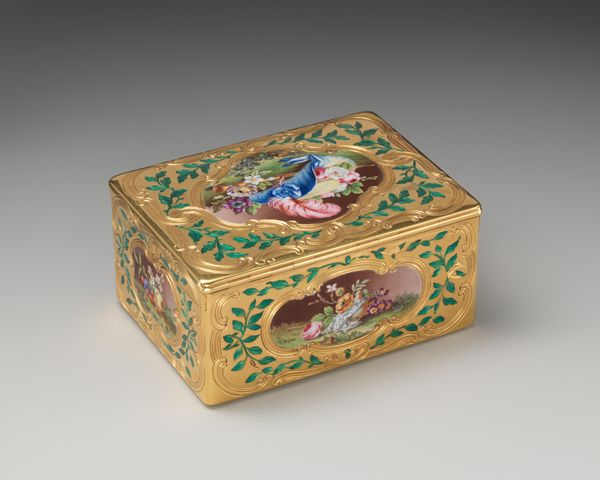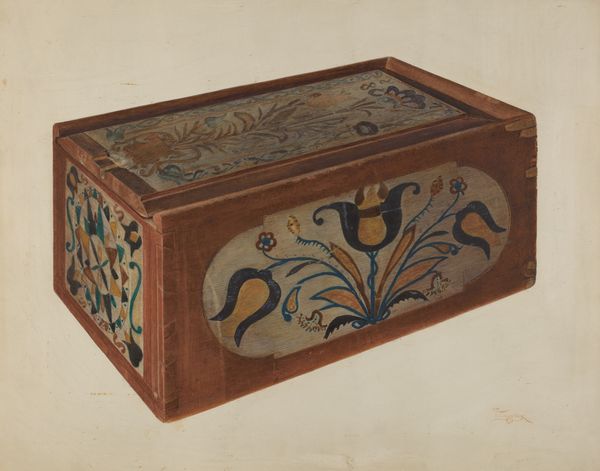
Document Box (Ryōshibako) with Hydrangeas and Butterflies 1711 - 1736
0:00
0:00
ceramic
#
asian-art
#
ceramic
#
flower
#
japan
#
plant
#
ceramic
#
decorative-art
Dimensions: H. 6 in. (15.2 cm); W. 8 1/4 in. (21 cm); L. 10 3/4 in. (27.3 cm)
Copyright: Public Domain
Curator: This decorative box, or "Ryōshibako," created by Nagata Yūji sometime between 1711 and 1736, offers a glimpse into the aesthetic sensibilities of the Edo period in Japan. You'll find it today at the Metropolitan Museum of Art. Editor: It's striking! My first impression is how balanced the overall composition feels, despite the asymmetrical arrangement of the hydrangeas and butterflies. And those textures... I want to run my fingers over it! Curator: The meticulous craftsmanship is indeed noteworthy. Document boxes like this served as practical objects for the aristocracy, holding writing implements or important papers. They also functioned as markers of social status, adorned with imagery reflecting cultural values. The hydrangea, for instance, symbolizes gratitude and understanding in Japanese culture. Editor: Look how the artist plays with contrasting metallic hues – gold for the blooming hydrangea and butterflies, silver for the leaves. The burnished wood provides such a lovely, subdued background for these meticulously crafted botanical forms. Curator: Precisely. The use of these precious materials suggests this box was likely commissioned by or created for someone of considerable wealth and influence. The motif choices tell a lot about Edo-era symbolic meaning related to displays of societal roles. Editor: Speaking of which, the rendering of depth is so interesting. There is some level of illusion through color, shape and scale, but it favors surface and flatness. It almost flirts with Cubism, without sacrificing legibility! Curator: Interesting point, but don't forget that such a decorative work would serve the political and social role of displaying artistic engagement. The box might act as a conduit to other political or even artistic commissions. The use of depth relates to what the owner sought to show through their collection practices, regardless of what visual practices that may resemble in later eras. Editor: True, the historical context certainly enriches our understanding. However, the object itself radiates visual harmony that transcends time, regardless of historical motivations! Curator: Absolutely, and that interplay between historical function and inherent aesthetic qualities provides such fertile ground for appreciating artworks such as this. Editor: Indeed. It reminds us how formal components become, in themselves, historical artifacts in that they transmit the priorities of display across time.
Comments
No comments
Be the first to comment and join the conversation on the ultimate creative platform.
